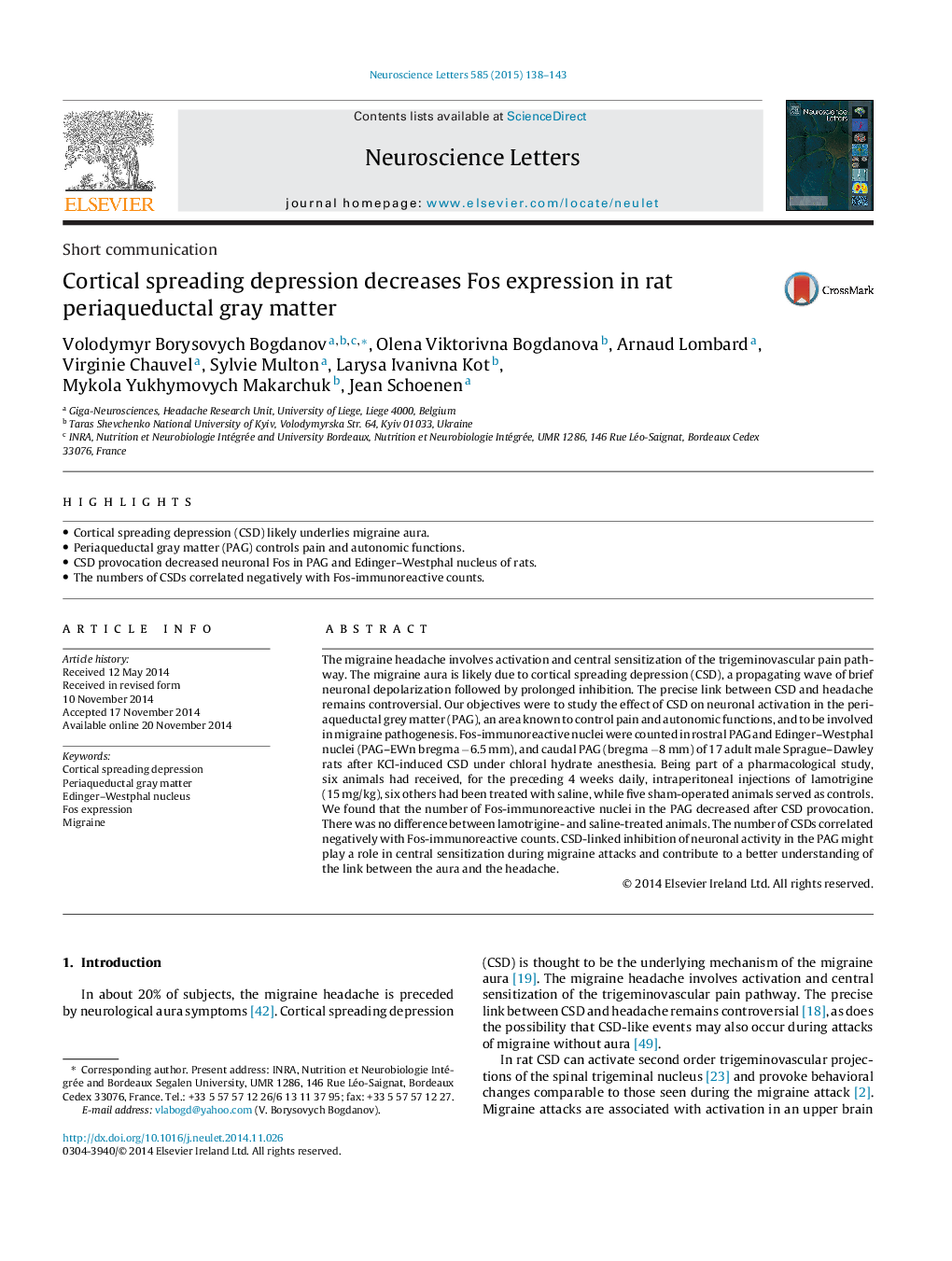| Article ID | Journal | Published Year | Pages | File Type |
|---|---|---|---|---|
| 6281194 | Neuroscience Letters | 2015 | 6 Pages |
â¢Cortical spreading depression (CSD) likely underlies migraine aura.â¢Periaqueductal gray matter (PAG) controls pain and autonomic functions.â¢CSD provocation decreased neuronal Fos in PAG and Edinger-Westphal nucleus of rats.â¢The numbers of CSDs correlated negatively with Fos-immunoreactive counts.
The migraine headache involves activation and central sensitization of the trigeminovascular pain pathway. The migraine aura is likely due to cortical spreading depression (CSD), a propagating wave of brief neuronal depolarization followed by prolonged inhibition. The precise link between CSD and headache remains controversial. Our objectives were to study the effect of CSD on neuronal activation in the periaqueductal grey matter (PAG), an area known to control pain and autonomic functions, and to be involved in migraine pathogenesis. Fos-immunoreactive nuclei were counted in rostral PAG and Edinger-Westphal nuclei (PAG-EWn bregma â6.5Â mm), and caudal PAG (bregma â8Â mm) of 17 adult male Sprague-Dawley rats after KCl-induced CSD under chloral hydrate anesthesia. Being part of a pharmacological study, six animals had received, for the preceding 4 weeks daily, intraperitoneal injections of lamotrigine (15Â mg/kg), six others had been treated with saline, while five sham-operated animals served as controls. We found that the number of Fos-immunoreactive nuclei in the PAG decreased after CSD provocation. There was no difference between lamotrigine- and saline-treated animals. The number of CSDs correlated negatively with Fos-immunoreactive counts. CSD-linked inhibition of neuronal activity in the PAG might play a role in central sensitization during migraine attacks and contribute to a better understanding of the link between the aura and the headache.
